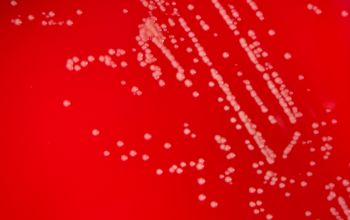Aggregatibacter aphrophilus
-
General information
Taxonomy
Family: Pasteurellaceae, previously: Haemophilus
Genus: Aggregatibacter aphrophilus
Formerly: Haemophilus aphrophilus
Natural habitats
Occur in the mouth and oropharynx of healthy individuals.
It is a frequent member of the microflora of human dental plaque, particularly between the teeth and in the gingival pockets
Clinical significance
Has been isolated from blood, spinal fluid, peritoneum, pleura, wounds and jaw infections.
Opportunistic pathogen occasionally implicated in subacute endocarditis, brain abscesses, sinusitis, arthritis and osteomyelitis often caused by dental treatments that cause a break of the oral mucosal barrier and a temporary bactereamia.
-
Gram stain
Gram negative short rods,
0.4-0.6 x 1.5-1.7 µm,
occasional filamentous forms. They may occur singly, in pairs or in small (big) clumps and show the tendency to bipolar staining.
This gives an appearance of a "Morse code" of dots and dashes.
-
Culture characteristics
-
Facultative anaerobic
5% CO2 improves the growth
BA: colonies are high convex, granular, yellowish, opaque, 1.0-1.5 mm within 24 hours.
Nonhemolytic
Some isolates are V-factor dependent
Broth: when grown in broth bacteria form granules at the bottom and up the sides of the tube (“tiny colonies”), while subsequent cultures become less adherent and exhibit uniform turbidity.
McConkey: no growth
BBAØ: growth
-
-
Characteristics
-
References
James Versalovic et al.(2011) Manual of Clinical Microbiology 10th Edition
Karen C. Carrol et al (2019) Manual of Clinical Microbiology, 12th Edition











